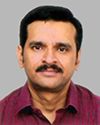Marine Seismic Acquisition: Expanding the Possibilities
OR
About the Course
SEG members, view the course for free!
2014 SEG Honorary Lecturer Pacific South. Historically, towed-streamer marine seismic acquisition has been a compromise between the geophysical requirements and the operational constraints. For several years advancements in marine streamer acquisition were on enhancing productivity by towing a large number of steamers and on design improvements in streamers and air gun sources. With the increasing demand of high-quality seismic imaging of complex geology, the focus in the last decade has shifted to "tune" the survey for improved wavefield sampling, bandwidth, and illumination.
The advent of broadband streamer-acquisition techniques has arguably been one of the most important developments in geophysics in the twenty-first century. These techniques involve removal of the free-surface ghost present in the conventional flat-tow hydrophone data, using a combination of novel streamer design/configuration and proprietary data-processing techniques, to deliver a broadband signal. Equally important has been the evolution of multi-azimuth (MAZ), wide-azimuth (WAZ) and full-azimuth (FAZ) acquisition to improve the illumination of structurally complex targets through better samplings of the azimuths.
This presentation shall focus on the aspects considered key enablers for expanding the possibilities in marine streamer acquisition. The following acquisition techniques, currently available in the market, shall be covered in the presentation:
- Dual-sensor streamers
- Over-under streamers
- Variable depth streamers
- MAZ, WAZ and FAZ circular shooting
- Emerging trends (multi-sensor streamers, broadband circular shooting, etc.)
Several case histories from Southeast Asia will cover application of the whole range of broadband acquisition techniques under diverse geological settings. Results of world's first 3D broadband full-azimuth circular shooting survey in Southeast Asia shall also be presented.
Your Instructor

Sandeep Chandola is a Custodian (Geophysics) with PETRONAS, the Malaysian national oil company. He received a master's degree in physics in 1984 from H.N. Bahuguna Garhwal University and a specialized diploma in petroleum geophysics from the Indian Institute of Technology, Roorkee in 1985. Sandeep started his career as a field geophysicist with ONGC, the Indian national oil company, and served for more than 20 years in various capacities in seismic data acquisition, interpretation, technology evaluation and strategic planning. In 2005, he joined PETRONAS Carigali in the Exploration Division, where he continues. His main professional contributions include design and implementation of innovative land, marine, and OBC 3D acquisition geometries, introduction of several new geophysical technologies (broadband seismic, 4C seismic, 4D seismic, controlled-source electromagnetics, full-tensor gradiometry, passive seismic, etc.) in ONGC and PETRONAS. Sandeep is a part of the Global Affairs Committee of SEG, a member of SEG, EAGE and the Society of Petroleum Geophysicists (India), and has been on the organizing committee of several workshops and conferences by SEG and EAGE. Sandeep has more than 35 technical publications, including papers presented at the SEG, EAGE, IPTC, PGCE, SPG and other international conferences. He was the recipient of the coveted National Petroleum Management Programme Award by the government of India in 2005 and the Professional of the Year Award by ONGC in 2004. In 2002, Sandeep also received the award for presenting the best technical paper at SPG conference at Mumbai.
